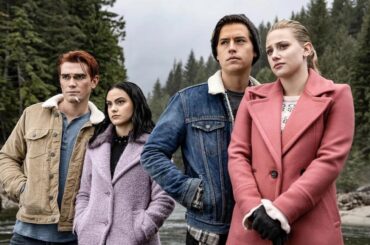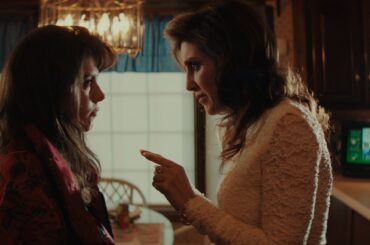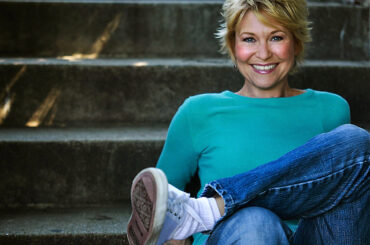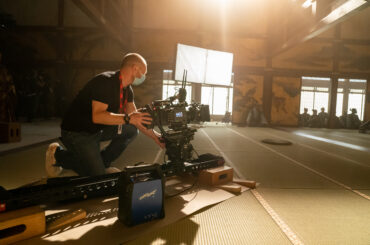Sometimes you just want a good time. Twisted Metal is just that, a 5 hour or so popcorn series. Season one of the video game adaptation aimed to please with an entertaining ensemble, an abundance of practical action, and a bit of sincerity to gel with all the quips.
Every episode of Twisted Metal was shot by cinematographer James McMillan.
McMillan shot Imaginary, episodes of Are You Afraid of the Dark?, and Defenders, in addition to second unit work several other Marvel productions. “I have a tendency to shoot really fast,” he told Immersive. “On Daredevil, there were fight sequences that I did where I did 150 setups in 12 hours. The crew I work with is awesome.”
As McMillan noted, him and his crew aren’t returning for season two of the Peacock series, but they made a dark yet poppy season one to be proud about. Recently, McMillan spoke with Immersive Media about his work on Twisted Metal and why he always pushed for darkness.
[Note: This interview has been edited for clarity and length]
You are the third cinematographer I’ve talked to in the last week where they shot the show from beginning to end. How was it creating a cohesive vision from beginning to end? Because that’s pretty unusual, usually for a cinematographer on a TV show.
Showrunner Michael, Jonathan Smith, liked the idea that one cinematographer would do all of ’em. We kind of set a look that everyone liked, and then every director wants to put their footprint on their episodes. It’s distinctive that it’s their direction, but you also can’t really get outside the wheelhouse of what you sort of create. You can’t watch two episodes and go to the third episode and be like, what is this show? It has to fit that naturalistic lighting, that style of camera movement, and how the characters are.
I’d obviously try to please the directors and give them something they wanted or elevate the photography that they had in their mind, but I was always conscious of the fact that the show should have a flow. We should maintain that flow throughout so that you don’t have this something that stands out to the point where the audience is taken out of the thought process.
You wanted to stick to naturalistic lighting, right? What rules did you set for yourself?
The only real theatrical lighting we got into was when we were in the casino and we did one where they were baking these guys. They were going to cook up the two police officers, but other than that, we really kind of stayed true to a naturalistic lighting style, and unless they were inside the 18 wheelers where they were creating power, we sort of kept it… I want to say simple, but we had a tendency to play warmer tones rather than cooler tones because of Anthony Mackie and Stephanie Beatriz, making them look good, but we didn’t overlight that film.
We aired on the side of making sure that we always balanced it, and you struggled in New Orleans because of the weather. I’d constantly have to wet down in the morning when it was Bluebird skies. I would always have to do wet downs because 20 minutes later the skies would go gray and it would rain for two hours, and you wanted to make sure there’s continuity. You don’t have the wide establishment and everything’s bow and dry, and then halfway through the scene everything’s soaked and the ground’s wet and it doesn’t work.
Did you also want to depart from naturalism at all in the finale? The show goes big there and becomes the Twisted Metal aesthetic gamers know.
We really tried to go for a very cinematic feel, so we went for a 2:1 ratio. It’s a little bit of a letterbox, top and bottom. We were always shooting in that range, so our depth of field was really shallow, so it always had a very cinematic feel to it. We kind of went for when we colored a more saturated feel, but I was forever trying to build contrast.
I went and colored the first couple episodes. I played it really dark and moody, not as far as I did with Daredevil or Defenders, but in that wheelhouse of building contrast and letting it play a little edgy. It was a texture I sold when I was hired as a director of photography, but ultimately, they wanted a brighter look.
The problem was when it was brighter, it just didn’t play. When I finally said to them, “Look how popular post-apocalyptic The Last of Us is, that’s the look we should be going for.” After that, they finally let me dial it back down. I liked the saturation of colors that showed a little bit of barrenness, and the greenness as if the nature had overgrown things. I always wanted to make it moodier.
Why is that?
I thought moodier was better. Even though it was comic, you weren’t taking any of the physical comedy away from the show. Obviously, verbally the vernacular was comedic, but it just felt like when you’re watching it, especially the way most video games, they have a tendency to play on the darker side and more contrast light, but not wrapping all the way around the face.
The moment where you really got that darkness you described of aiming for was the destruction of Evelyn. Good shot there. With all the elements, did you feel like that captured exactly what you had in mind there?
Those bonfires and stuff, I got a chance to darken up. A lot of times it’s weird because you could capture images and you can darken it, but if the information is there, they’ll brighten it. Whereas with that one, I didn’t leave the ability to brighten it. I kept it on the kind of cusp of exposure. So if you wanted to brighten it, there was nothing there to brighten. The exposure was what it was, so there was no room to really make it brighter. In Daredevil, we never gave them the opportunity to dial it brighter, because they’re no information there.
Something particularly strong about your work here is you spend so much time in cars. I don’t know any cinematographer that says shooting interiors in cars is easy. How did you make all that time spent in vehicles cinematic and fun?
You know what it is? Stephanie Beatrice’s absolutely wonderful, and so is Anthony Mackie, they had a really great sense of humor. On a process trailer or once you start loading everybody onto two vehicles and you start to drive a road and you have to reset and find turnarounds, if you get two pages or two and a half pages of work done, that’s a big day of car work. We don’t have the time for that.
So in a lot of the situations, we made sure that Anthony and or Stephanie felt comfortable, but we rigged right directly on the car. We had cars that you could just literally lift the hoods off of. We had the receivers for hostess trays and for hood mouse. The grips could rig as fast as we could shoot a car, we could move and do the next shot.
It was like an indie pit crew the way we had it lined up. We weren’t doing two pages a day. On a driving day, we might do seven pages. We moved that fast with them. We just had the transmitter. The antennas were already set up. We were in the following vehicle. If we were looking down the hood, we were in front of them. If we were looking sideways or from shooting from the backseat, we had a B-camera operator that gave it life from the backseat for French overs.
Obviously budget is always a limitation. As a cinematographer, what are some tricks in your toolbox where you’re like, okay, I only have this, but I can create a bigger sense of scale by doing this or that?
I mean, I’m super fortunate in that I came up through nepotism. My grandfather was a stagehand at Radio City music hall. He married my grandmother, who was an original Rockette. When filming started, he was a part of it and he had eight daughters and one son, Billy Miller. My uncle did Jaws, Terms of Endearment, and Silence of the Lambs as a key grip. I worked as a key grip for 30 years.
Aways on the crew side, so I knew how to do tie-ins. I knew the electric side, the prop side, the set deck side, the scenic, the hair and makeup. I was always immersed and asking questions. When I finally decided to make the move to cinematographer, it came about through a script supervisor who had a book called, The Aspern Papers, but it took place in Venezuela, and she asked me if I’d be willing to shoot it. We flew down there and we shot it, and she entered it in three film festivals. I won best cinematography in all three.
So the direct DP I was working for said, “You should start shooting. You shoot my second units for me.” So the production got me in. I started doing that on Alpha House, and then Daredevil was the next move. On Daredevil, they were like, look, between alternating episodes and all the action units, you’ve got to quit being a key grip. That was pretty much the last time I did.
Everyone has their own journey as a cinematographer, but that is a very unique journey.
Think I’m the only one. I could be wrong, but most of ’em come out of camera or come out of the electric side. They either know the lighting with electric or they know the cameras from the camera side. I don’t know of any other key grips that became cinematographers.
So how do you think that has helped you as a cinematographer having that experience?
I just think because of my family and the amount of questions I asked. I know everybody’s job and can find solutions because key grips are basically problem solvers. They come to you and we have a problem and you come up with solutions.
I always see things outside the box that everybody else does. I think I’m over 7,000 days on set and over 100,000 hours work. I’m excellent at finding solutions where other people can’t find them. No, I got in, I did second-unit directing, so now I’m going to direct my first film. I just came back from Pakistan a week and a half ago. I’m going to do a film called Unmarriageable.
Excellent.
We worked the weekend, Thunderbolts, the Marvel Show was in town, so we did some photography for them over the weekend. I finished up last night, so that’s why I looked the way that I do right now.
But I really had a great time on Twist Metal. I thought it was a great show. I saw a lot of opportunities there. I’m super happy that I got the opportunity to shoot it. I’m a little sad that the second season didn’t happen for us [in New Orleans], and I hope that the person that they hire has the wherewithal to see what we did and sort of maintain that.
Twisted Metal is available to stream on Peacock.





